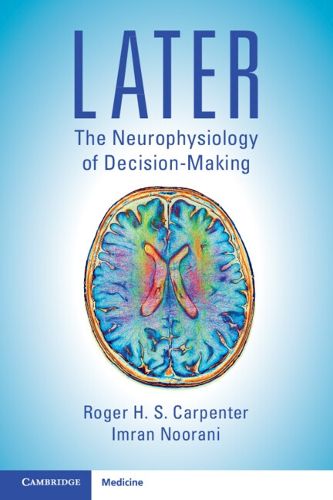Readings Newsletter
Become a Readings Member to make your shopping experience even easier.
Sign in or sign up for free!
You’re not far away from qualifying for FREE standard shipping within Australia
You’ve qualified for FREE standard shipping within Australia
The cart is loading…






Why is deciding to do something sometimes so slow and difficult? How do we make decisions when lacking key information? When making decisions, the higher areas of the brain deliberately suppress lower areas capable of generating much faster but ill-considered responses while they develop ones that are more sophisticated, based on what can be gained in return. In this engaging book, the authors explore the increasingly popular neural model that may explain these mechanisms: the linear approach to threshold ergodic rate (LATER). Presenting a detailed description of the neurophysiological processes involved in decision-making and how these link to the LATER model, this is the first major resource covering the applications in describing human behaviour. With over 100 illustrations and a thorough discussion of the mathematics supporting the model, this is a rigorous yet accessible resource for psychologists, cognitive neuroscientists and neurophysiologists interested in decision-making.
$9.00 standard shipping within Australia
FREE standard shipping within Australia for orders over $100.00
Express & International shipping calculated at checkout
Why is deciding to do something sometimes so slow and difficult? How do we make decisions when lacking key information? When making decisions, the higher areas of the brain deliberately suppress lower areas capable of generating much faster but ill-considered responses while they develop ones that are more sophisticated, based on what can be gained in return. In this engaging book, the authors explore the increasingly popular neural model that may explain these mechanisms: the linear approach to threshold ergodic rate (LATER). Presenting a detailed description of the neurophysiological processes involved in decision-making and how these link to the LATER model, this is the first major resource covering the applications in describing human behaviour. With over 100 illustrations and a thorough discussion of the mathematics supporting the model, this is a rigorous yet accessible resource for psychologists, cognitive neuroscientists and neurophysiologists interested in decision-making.